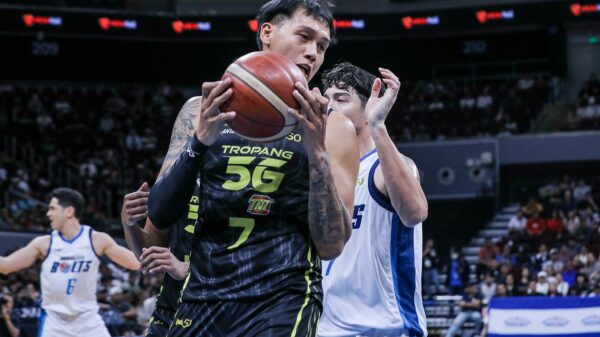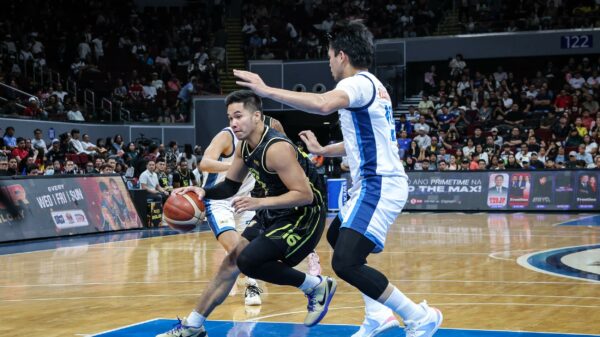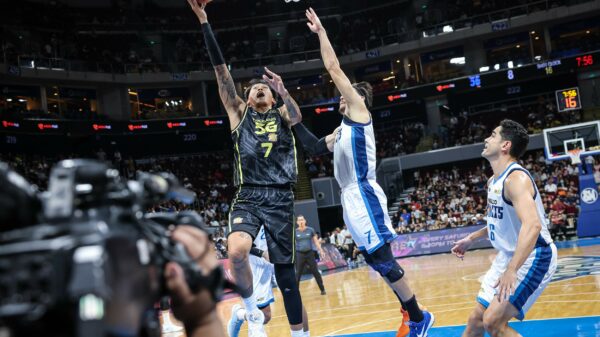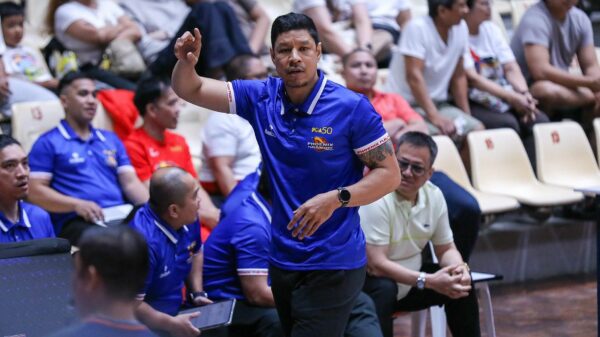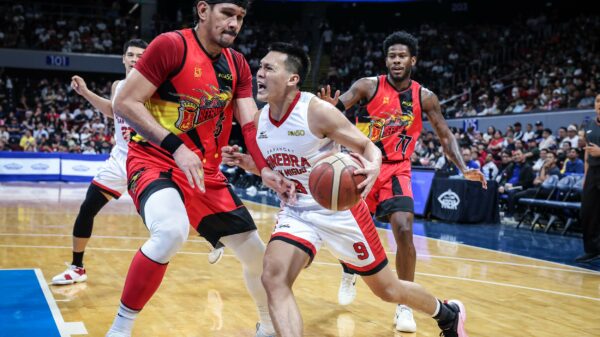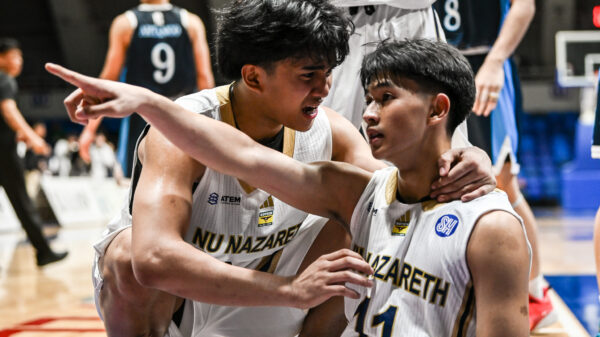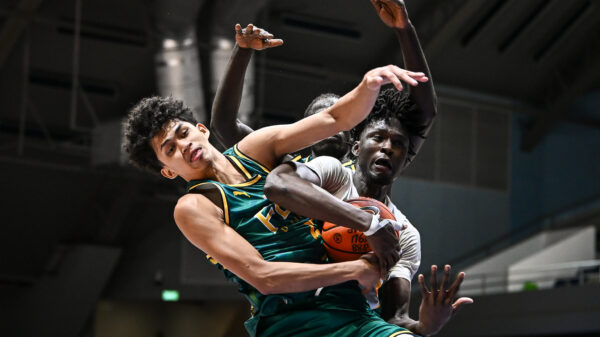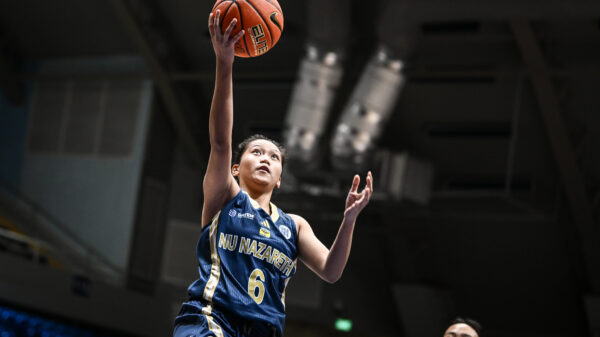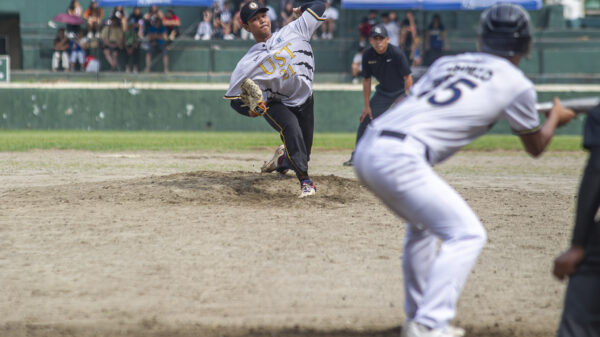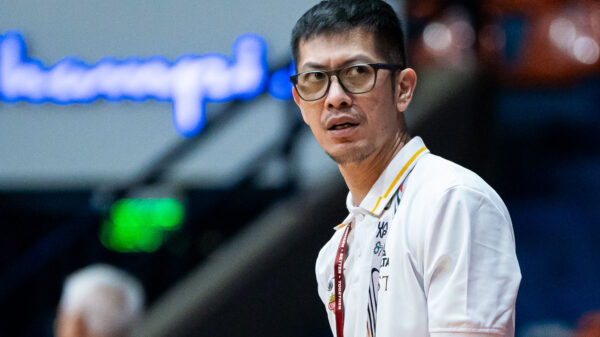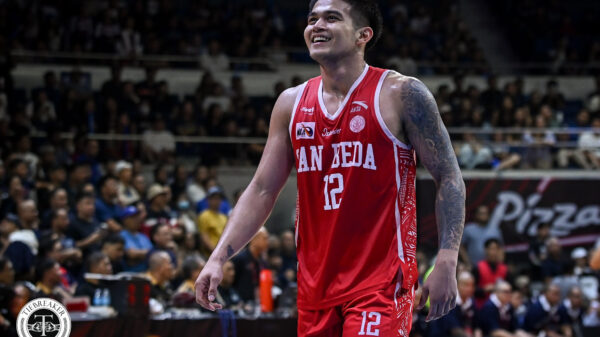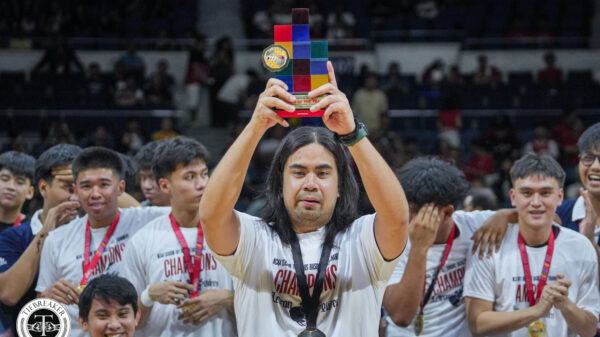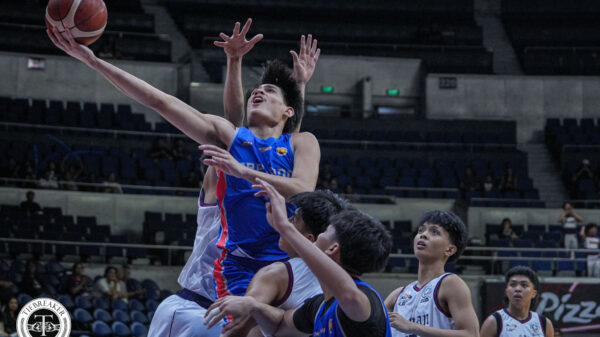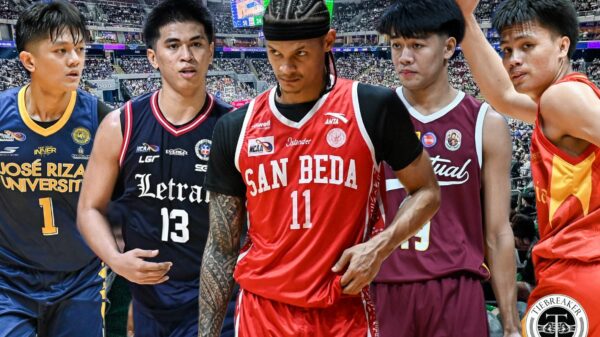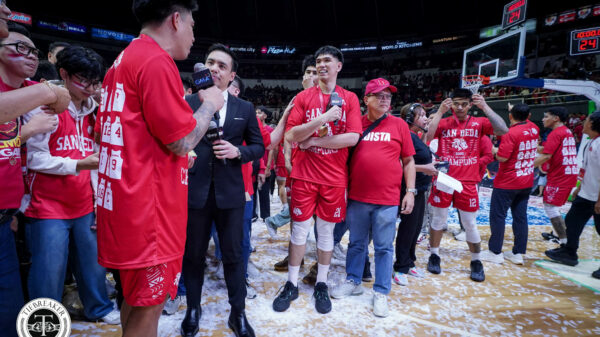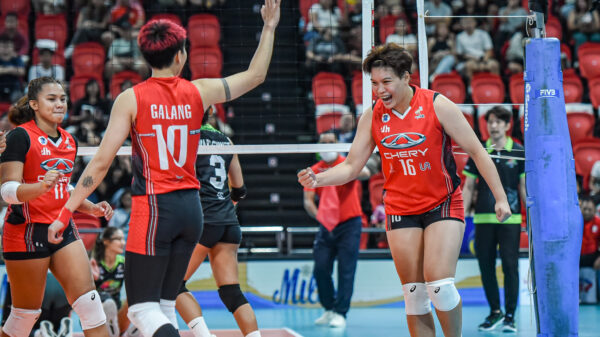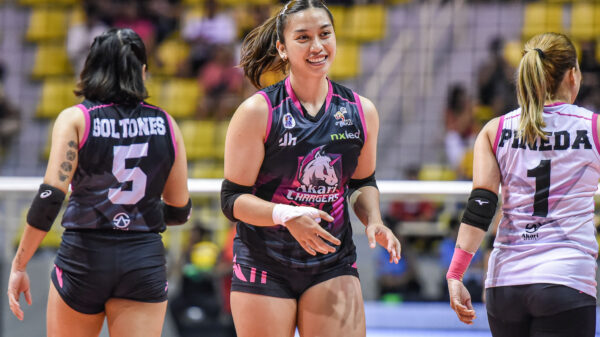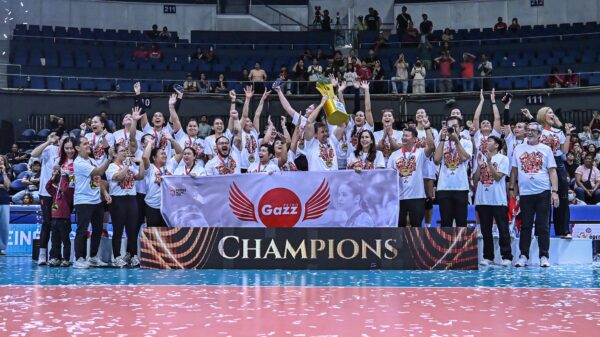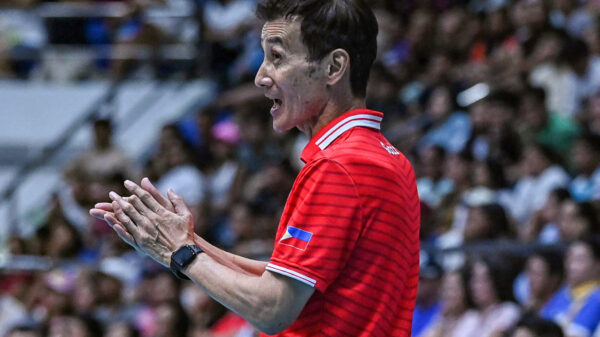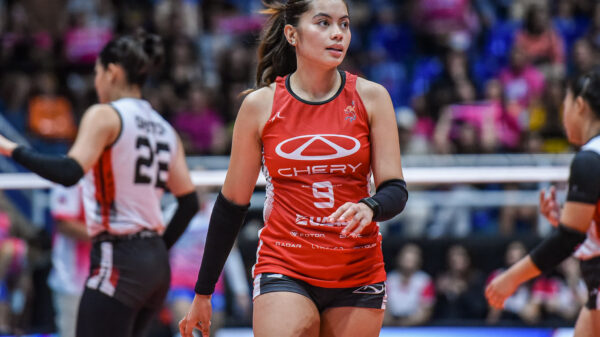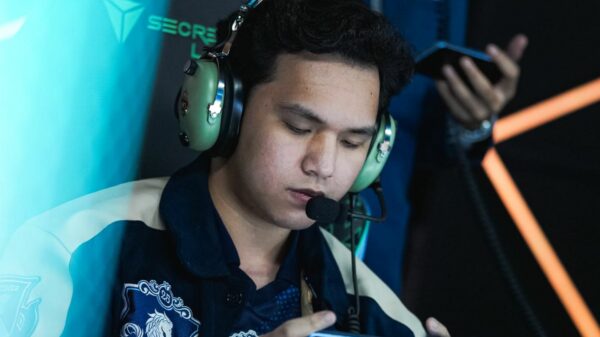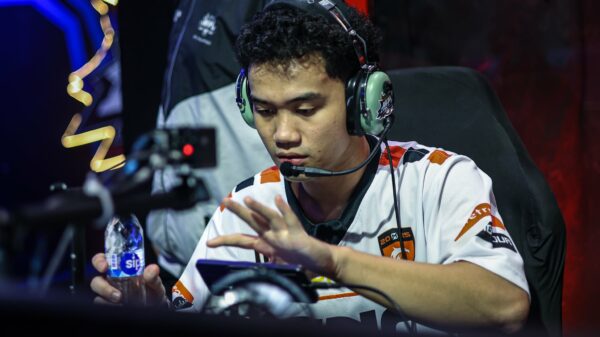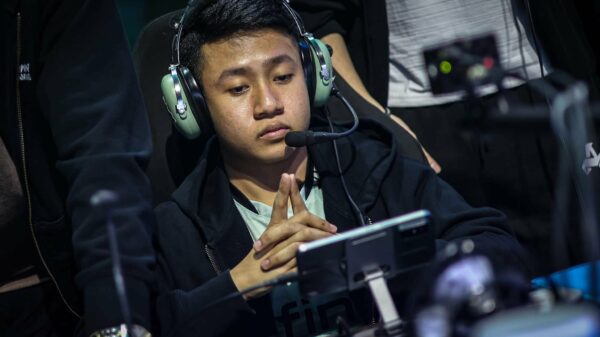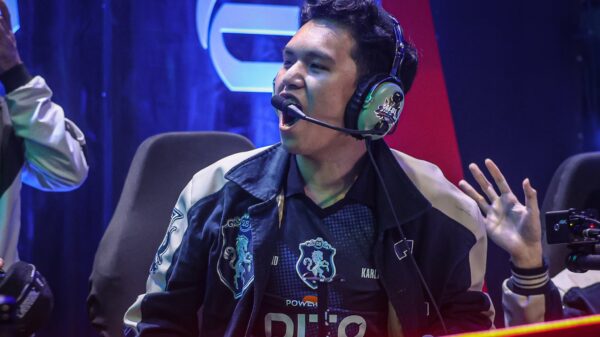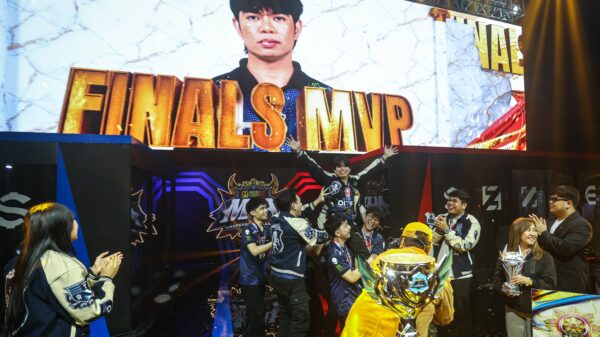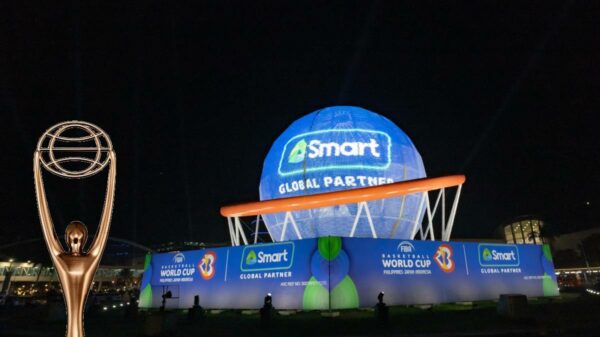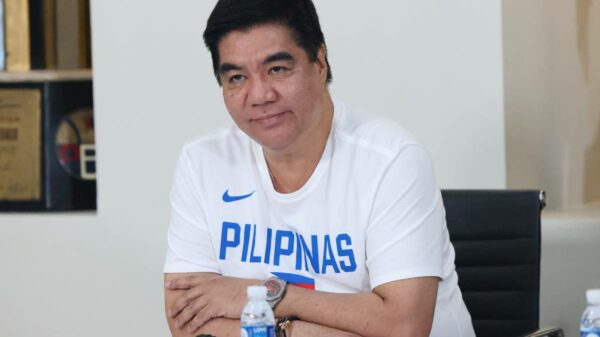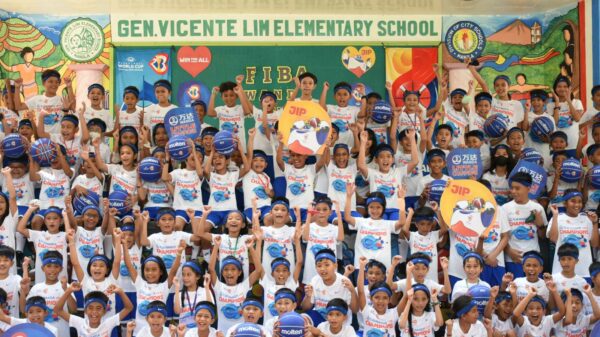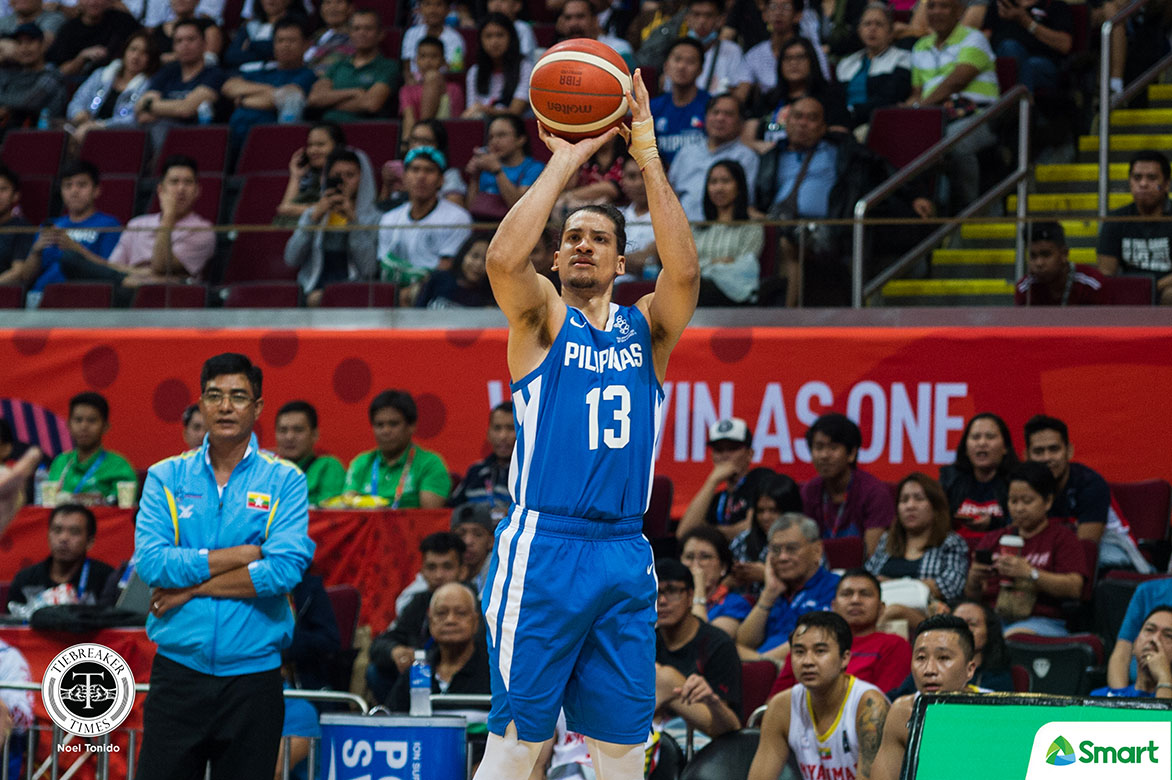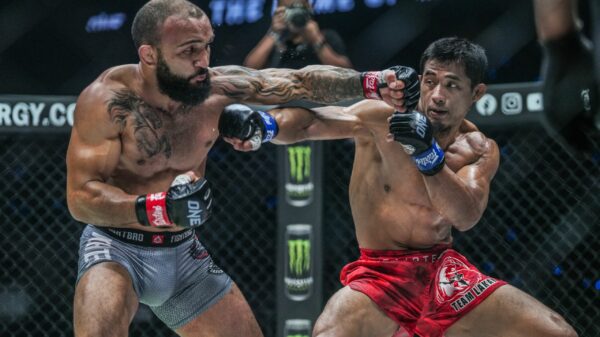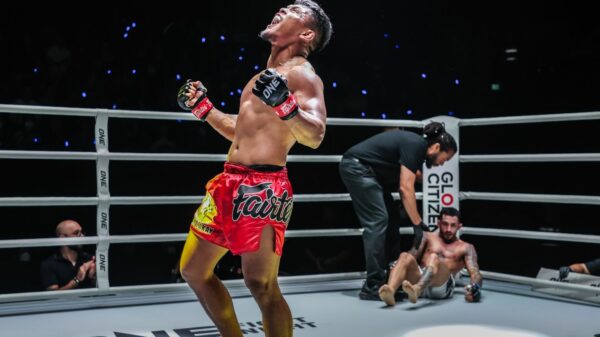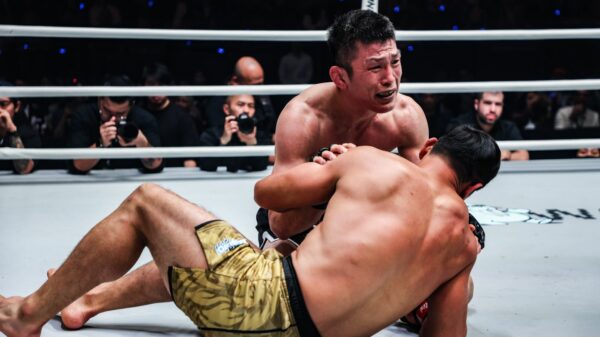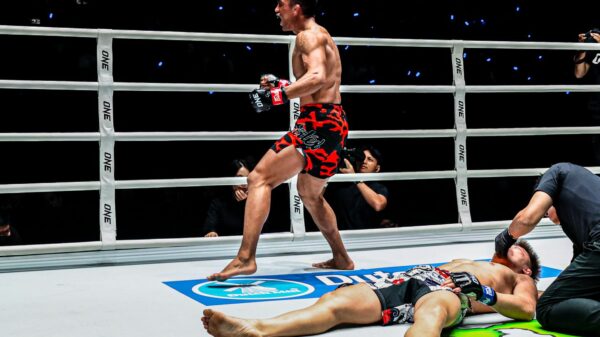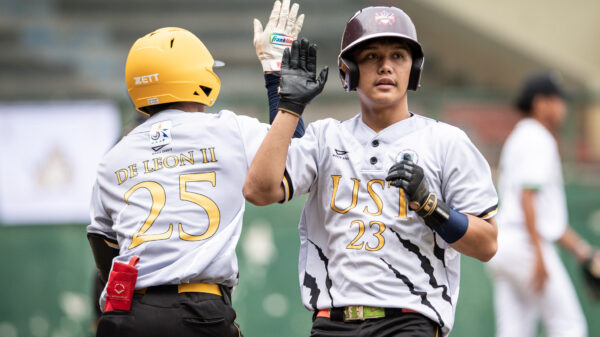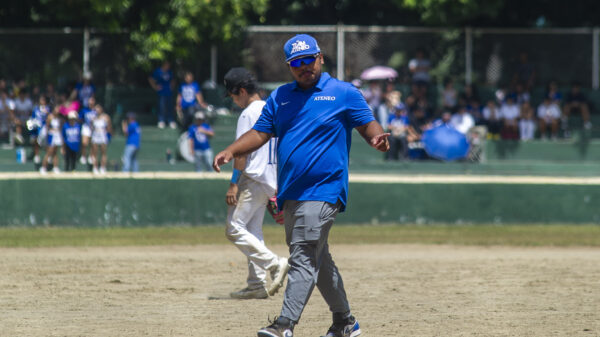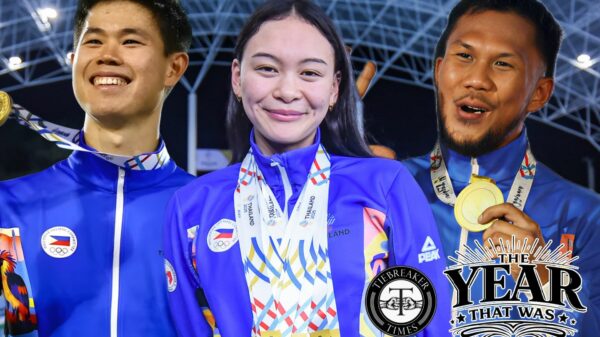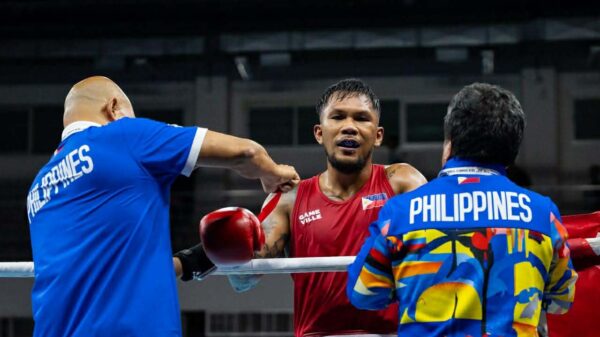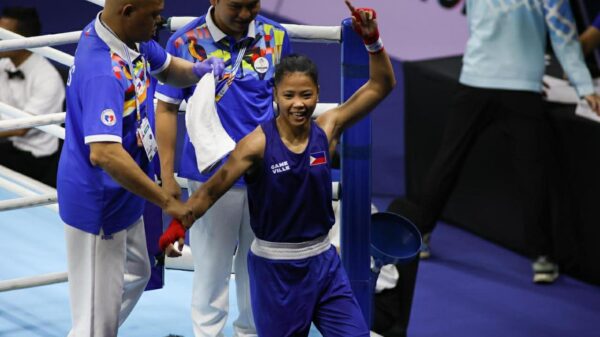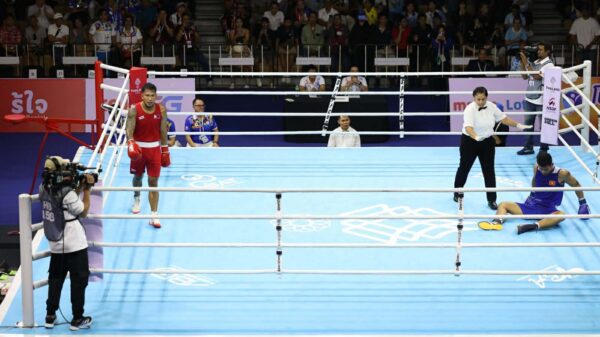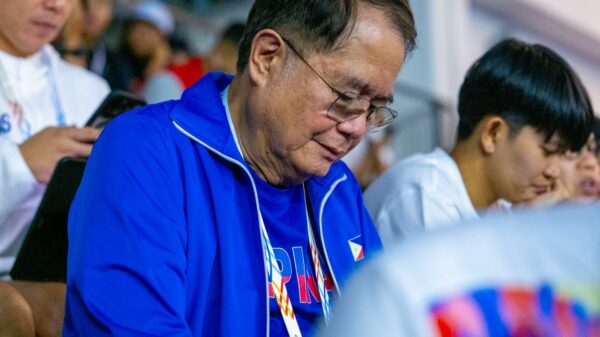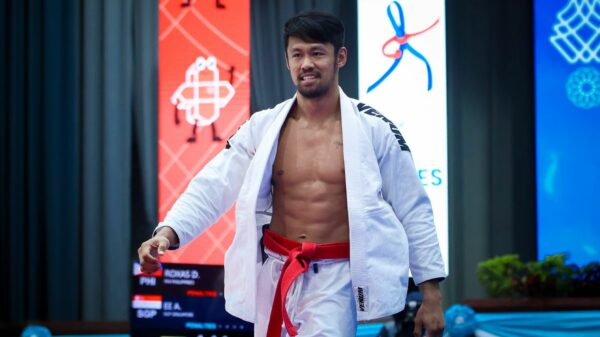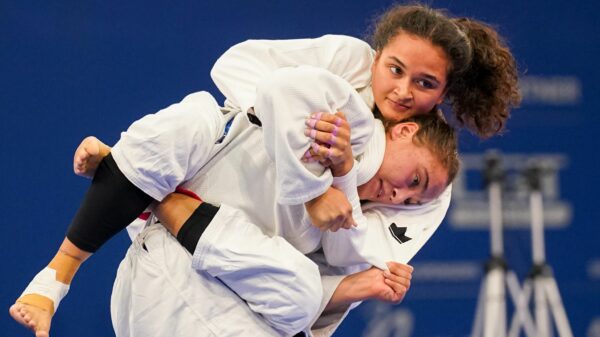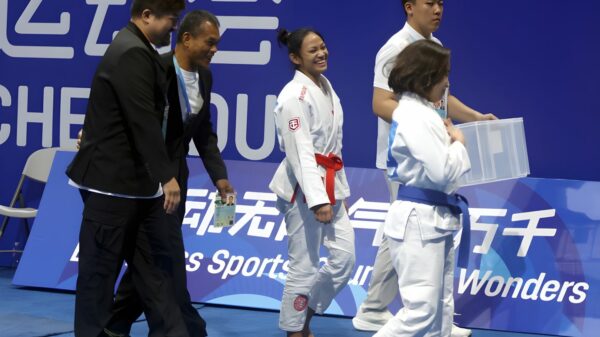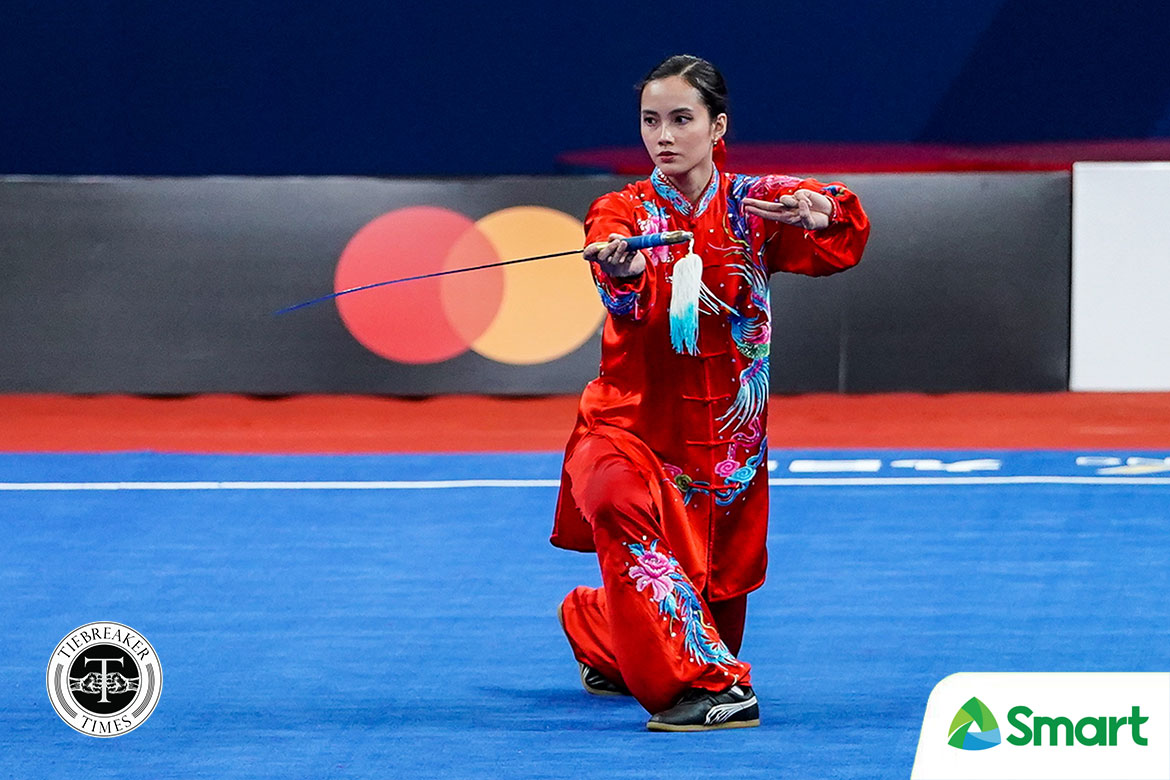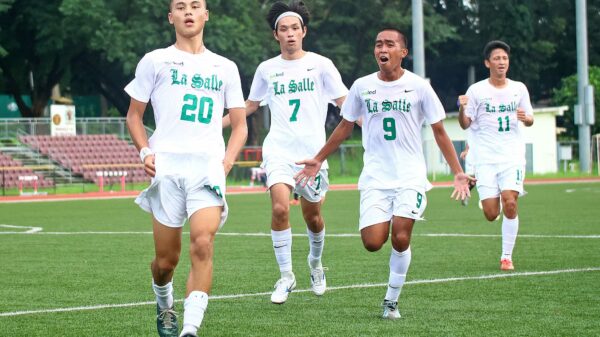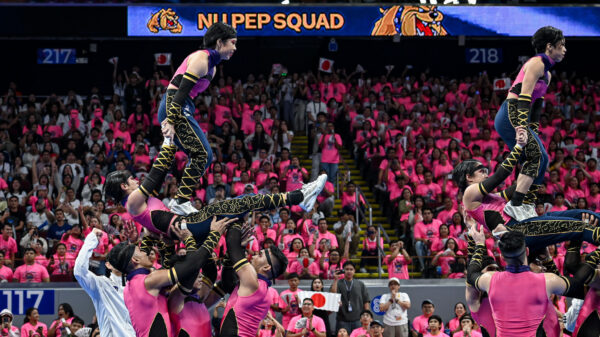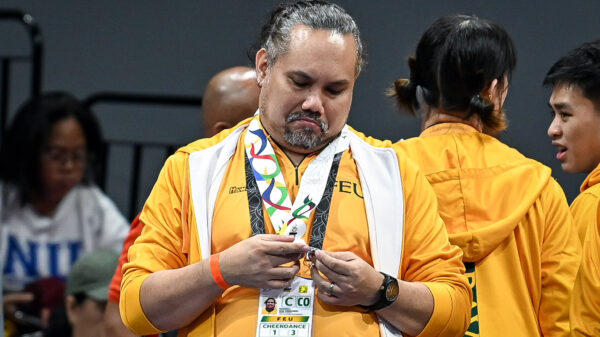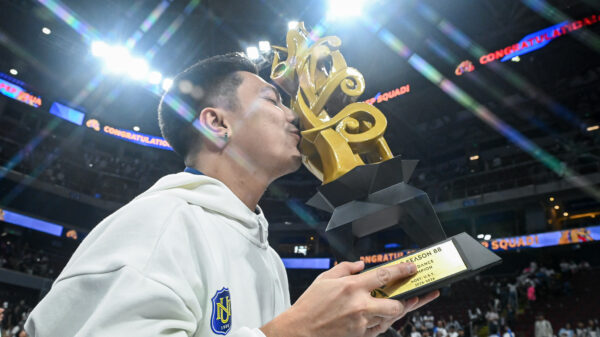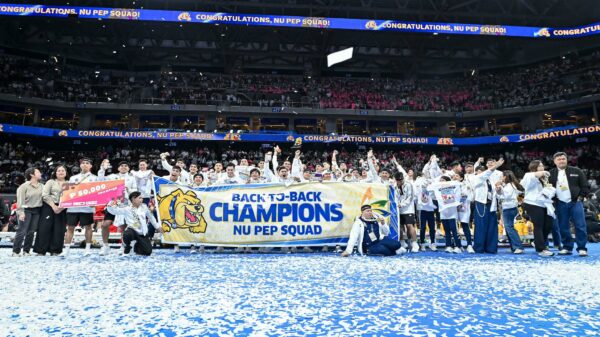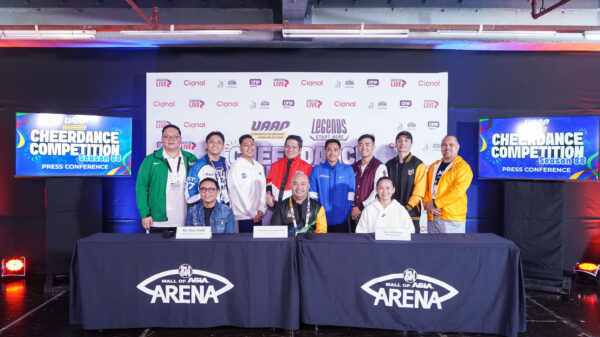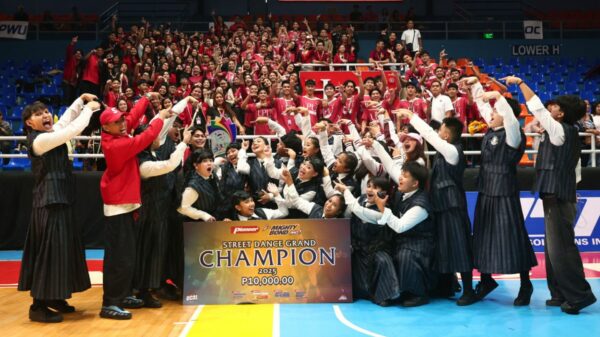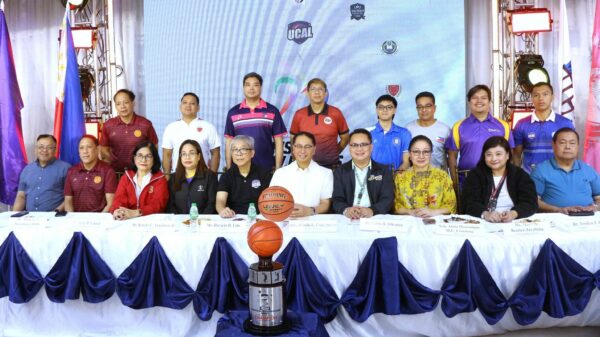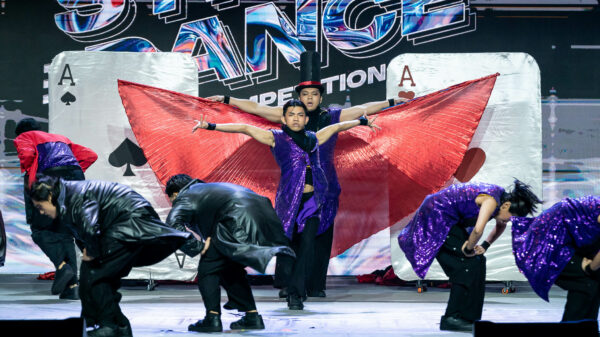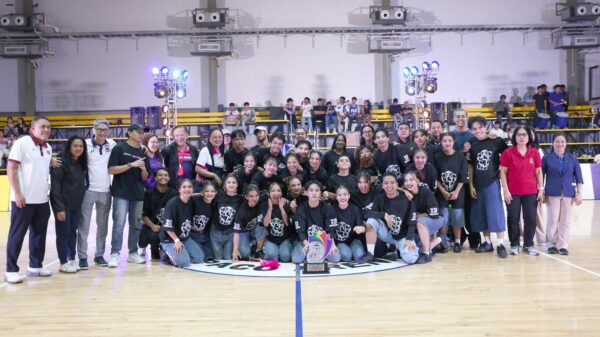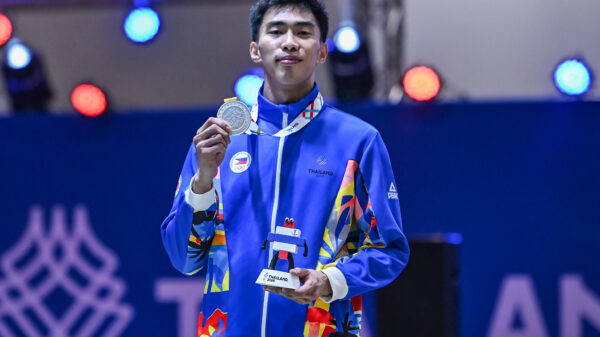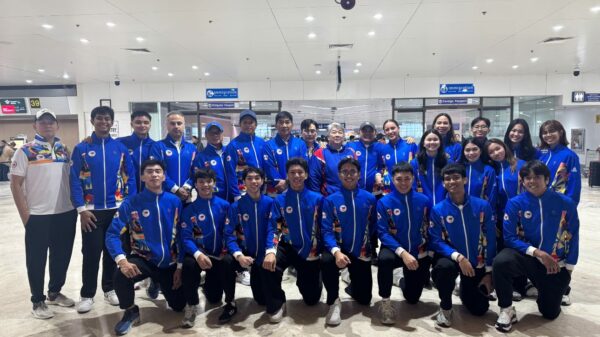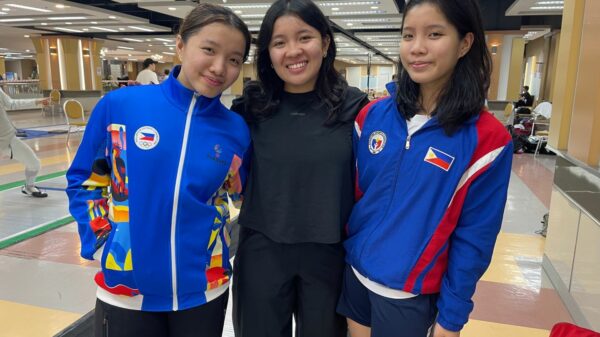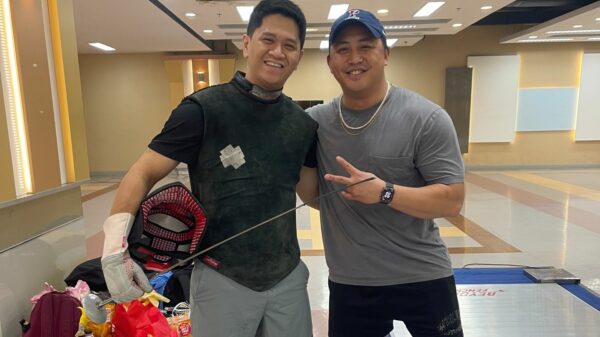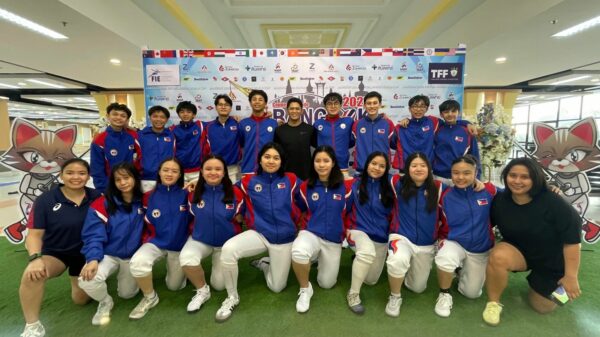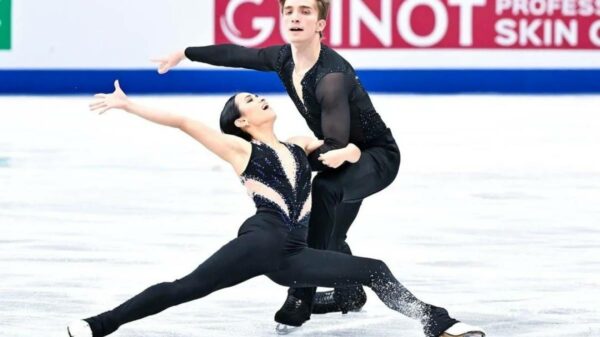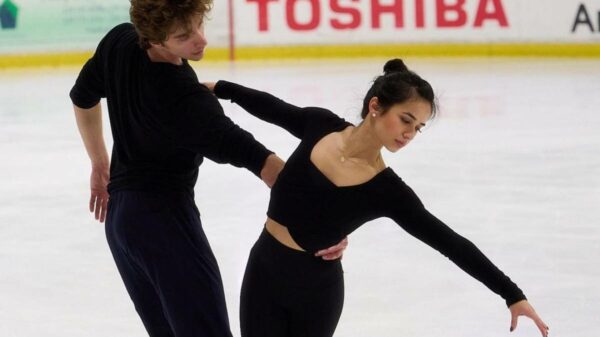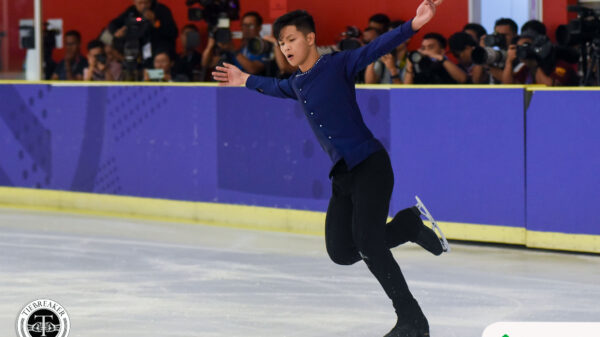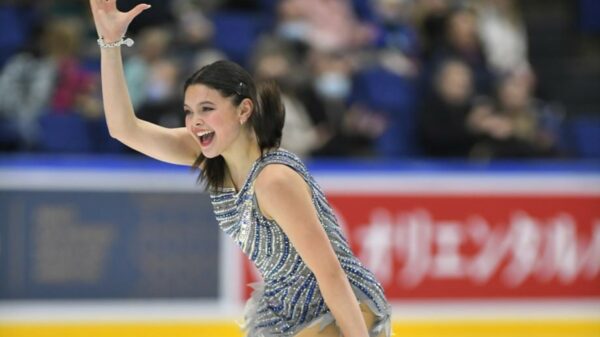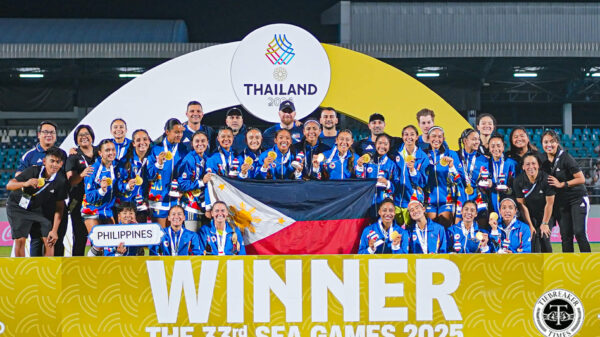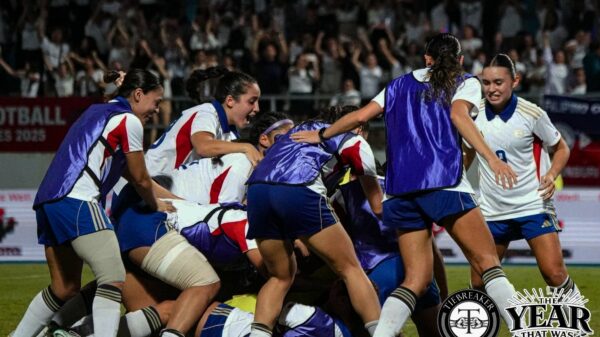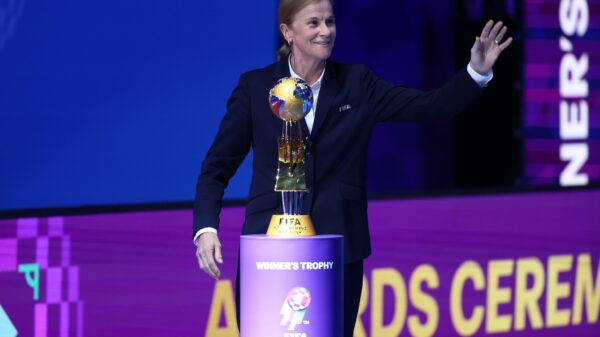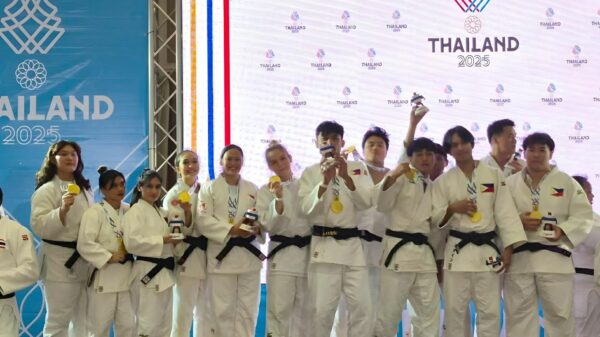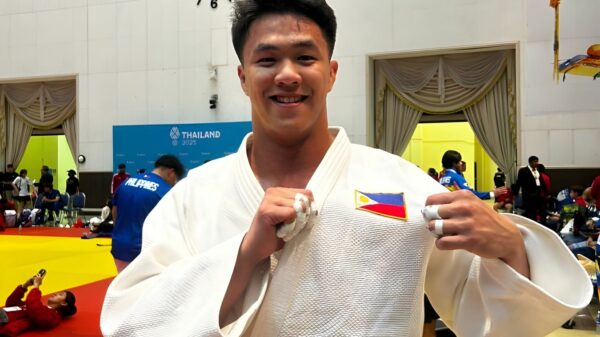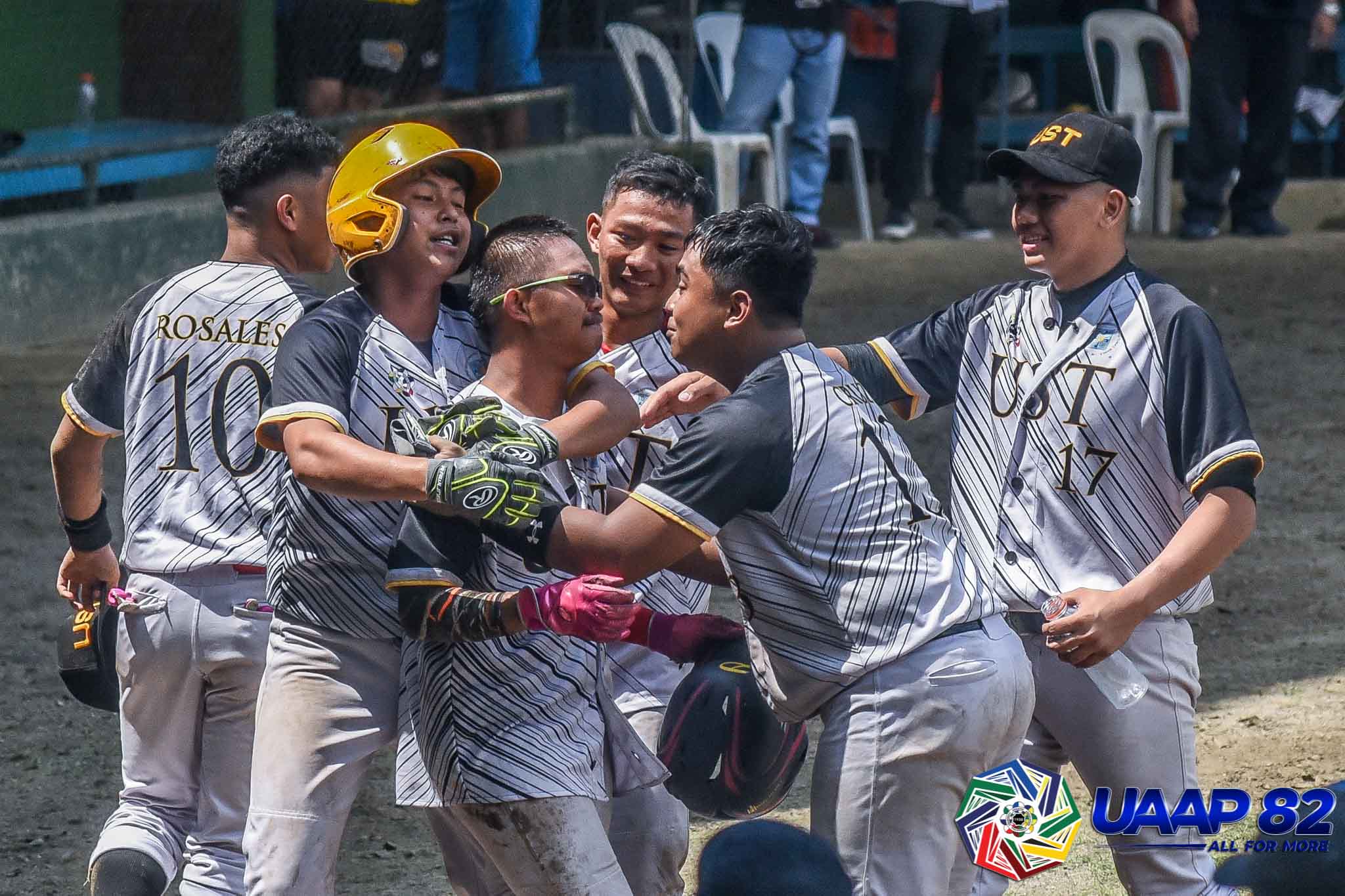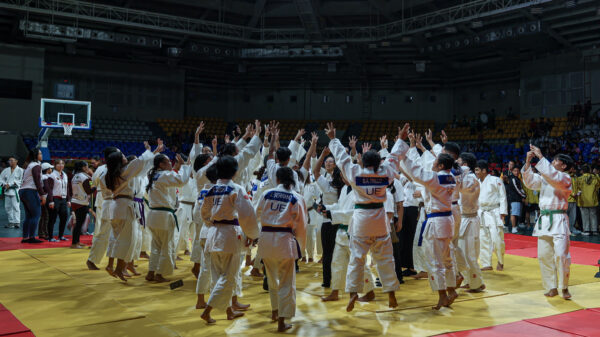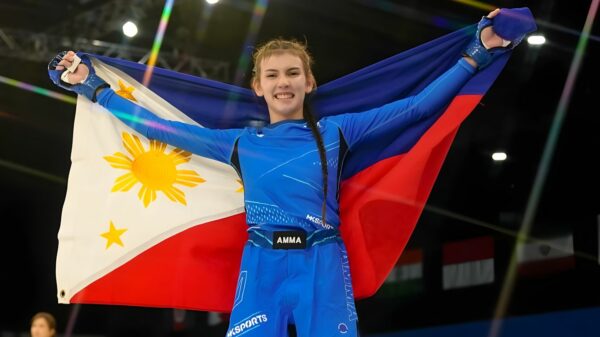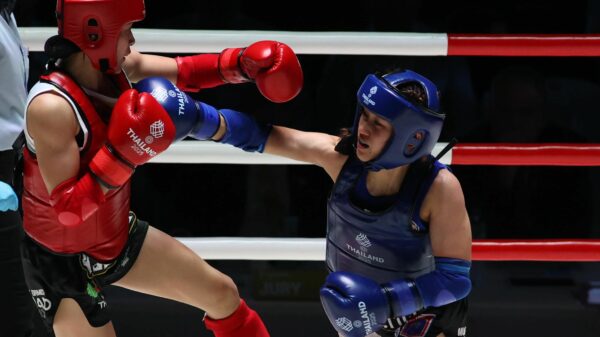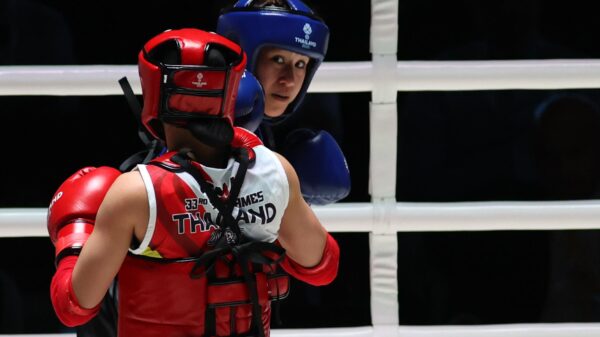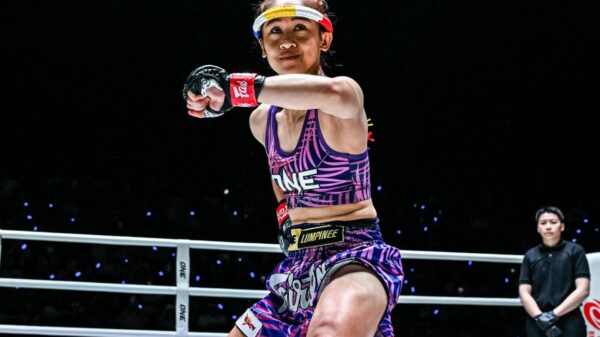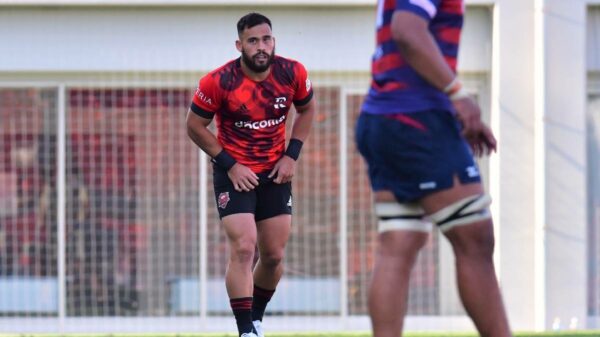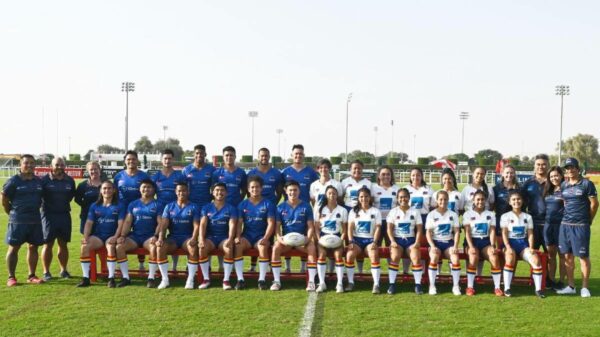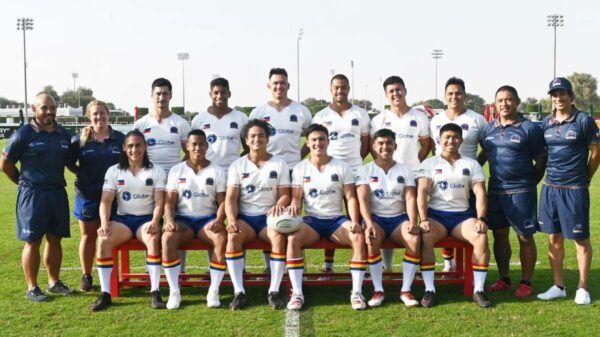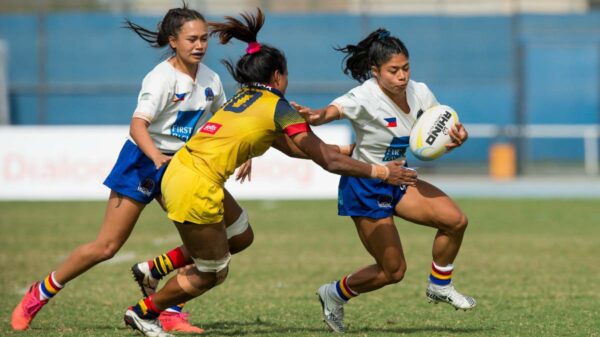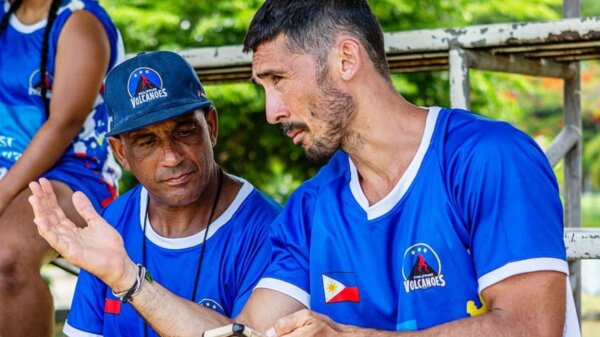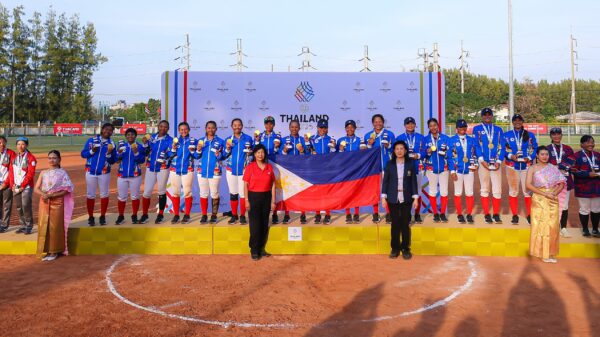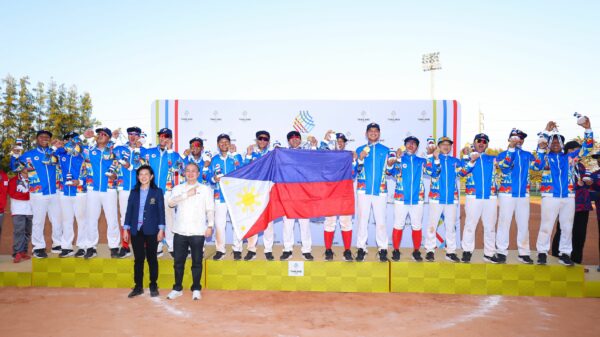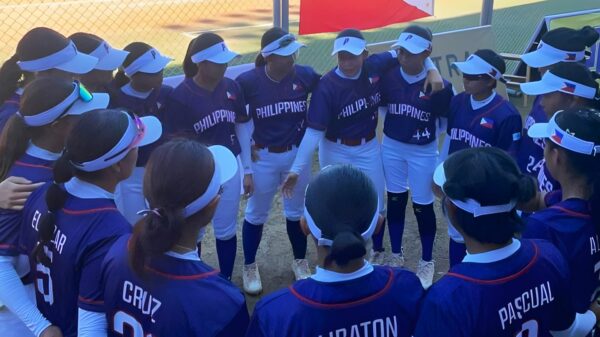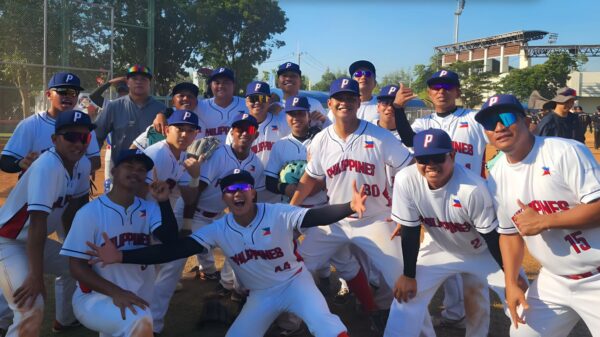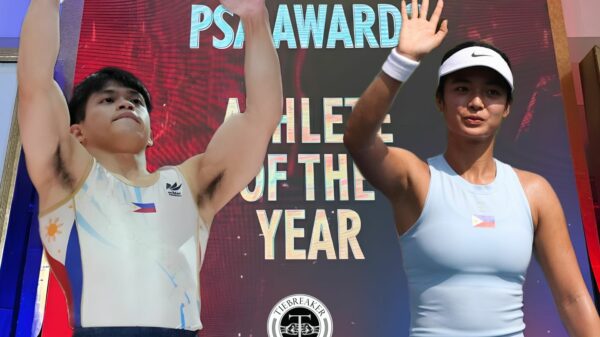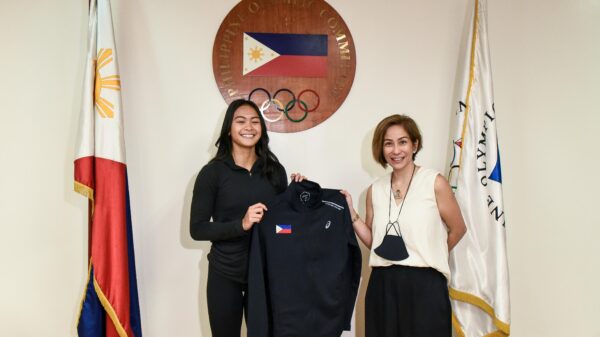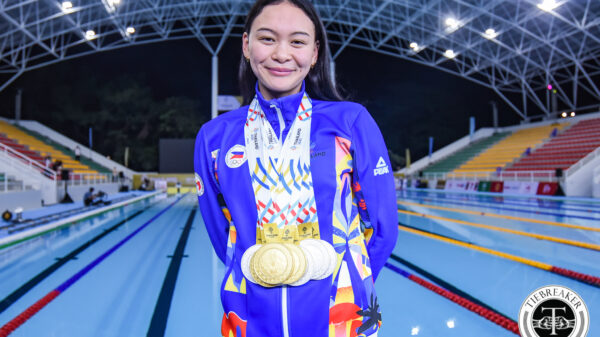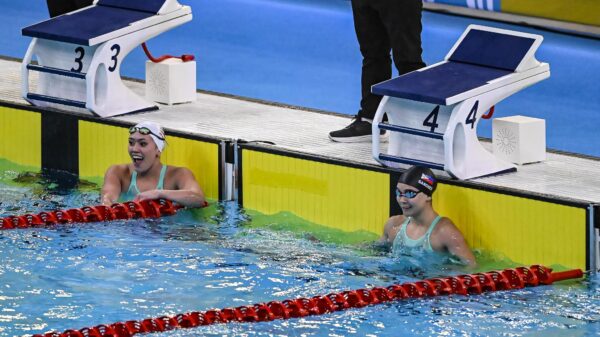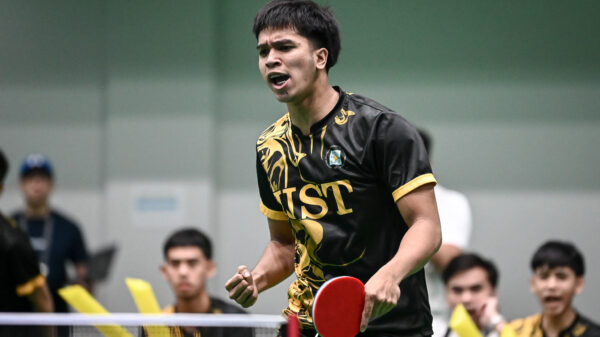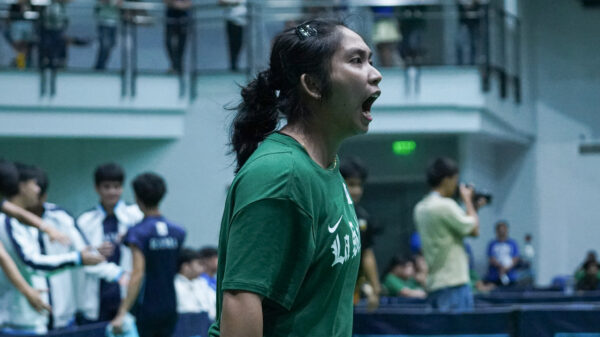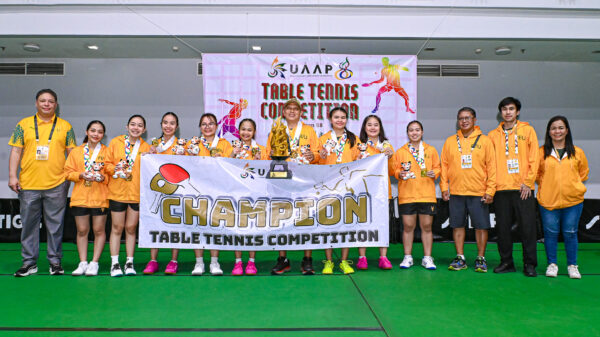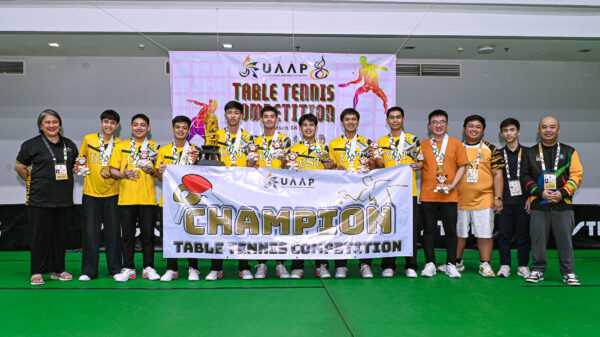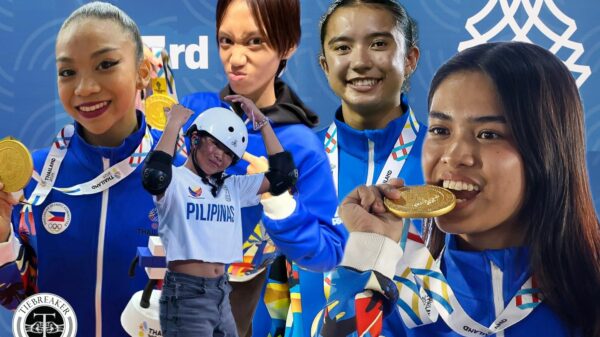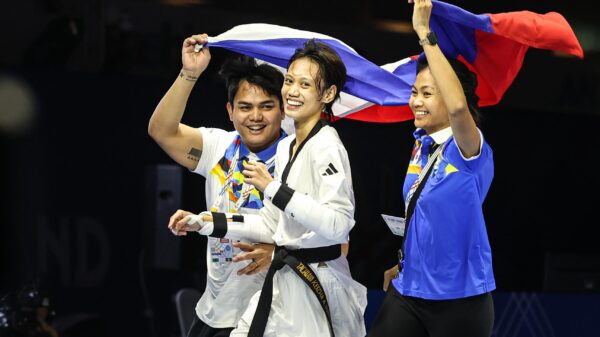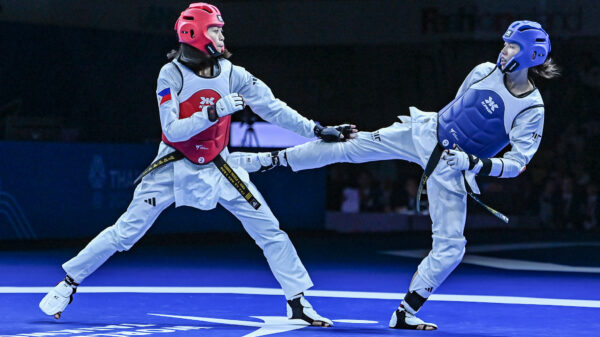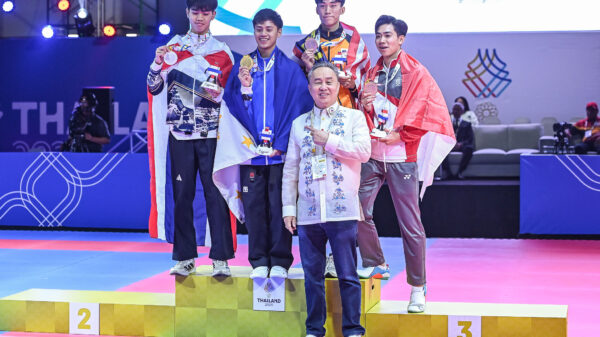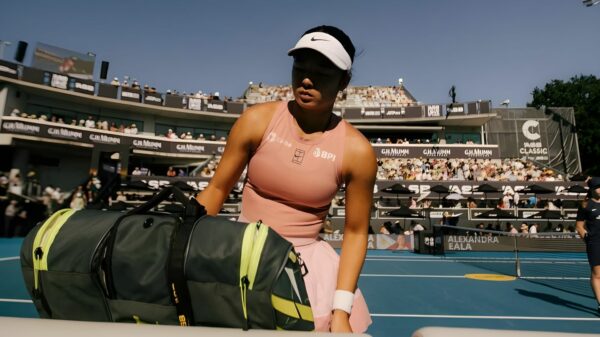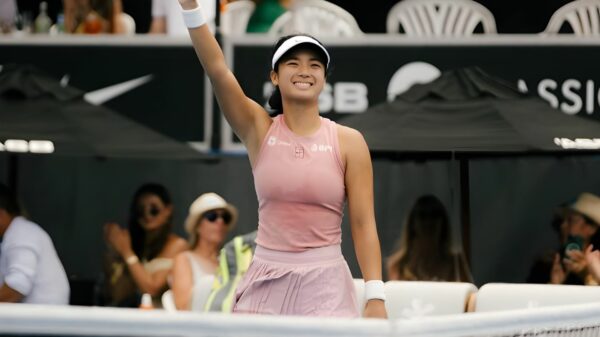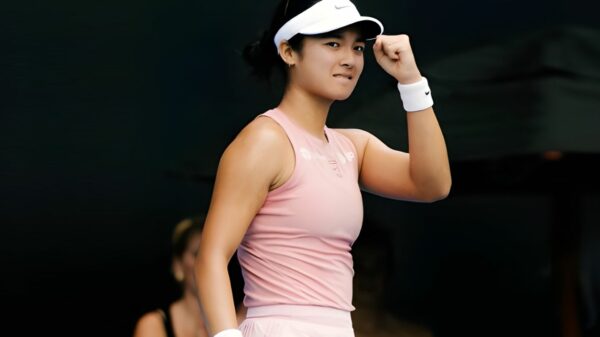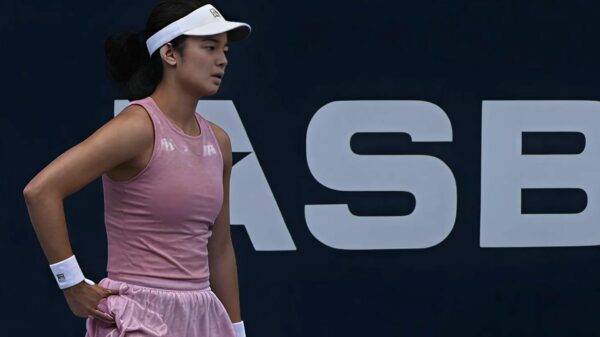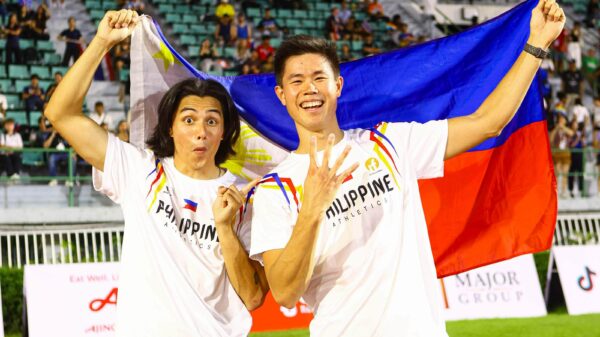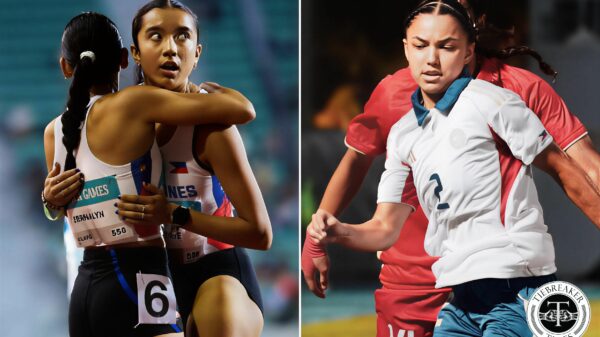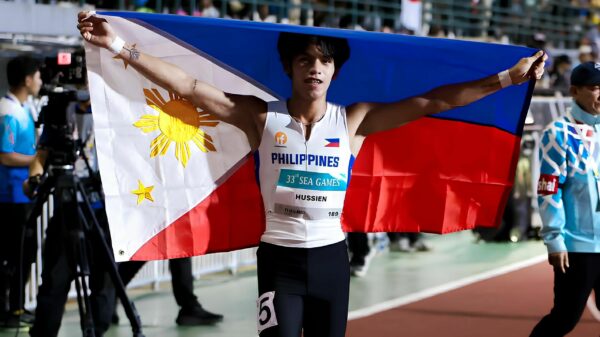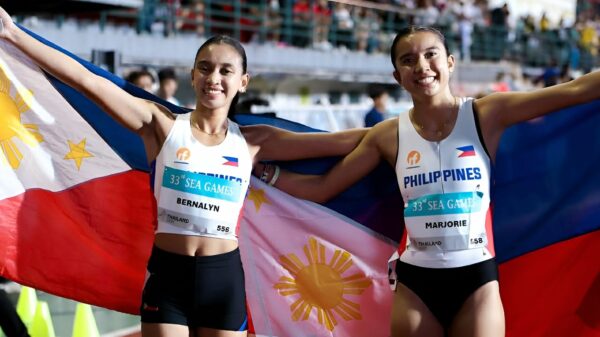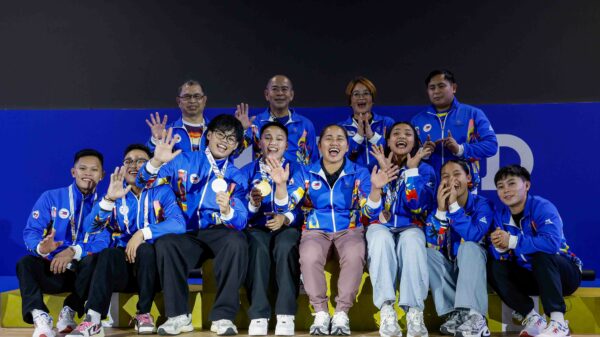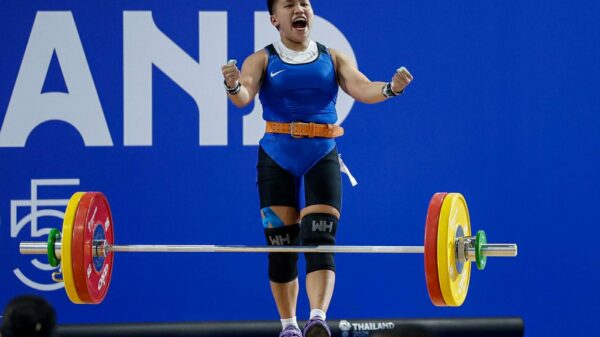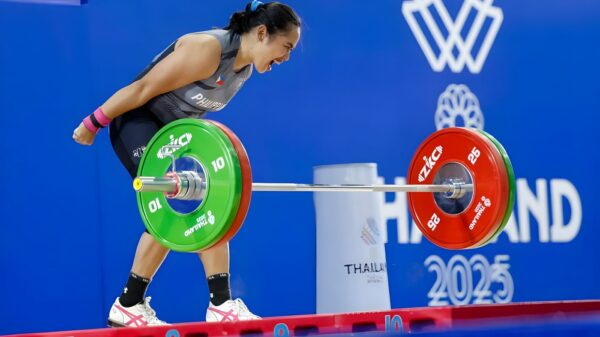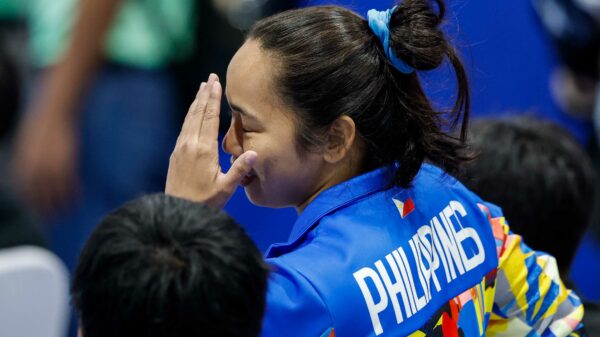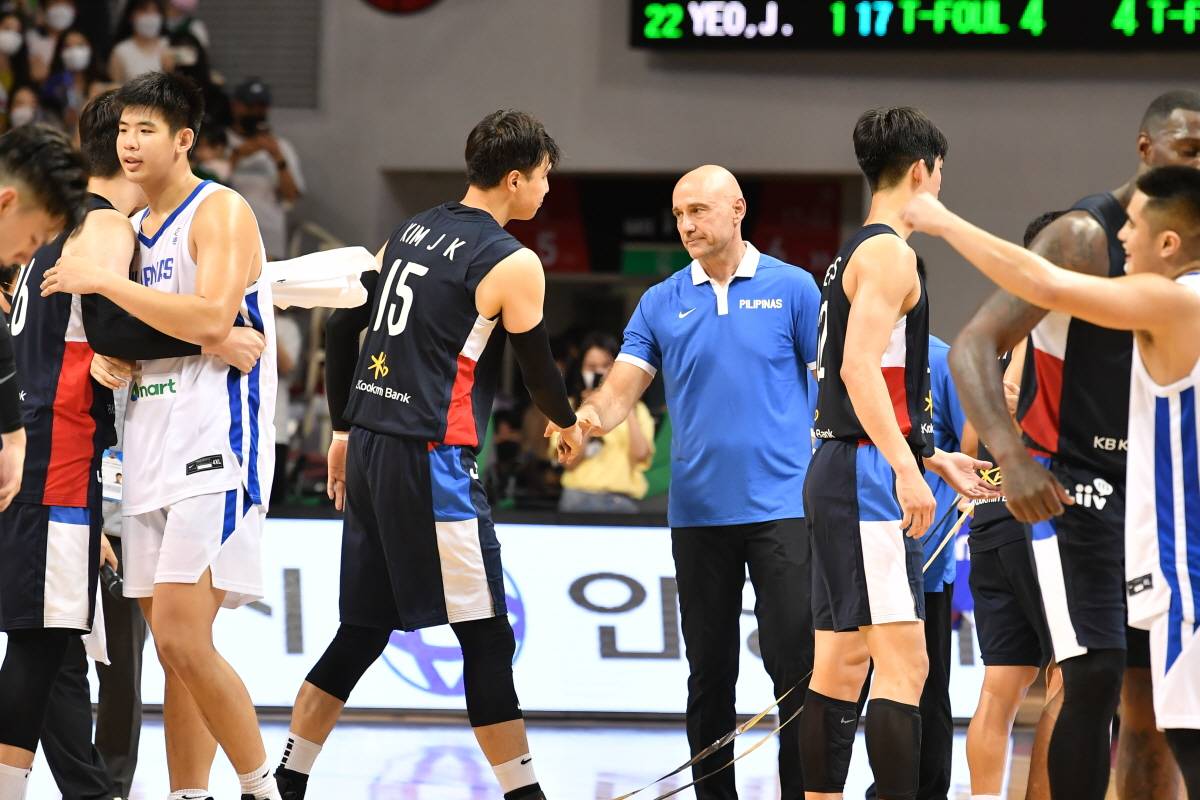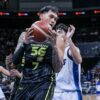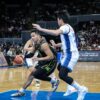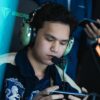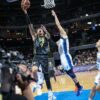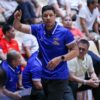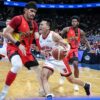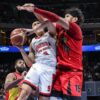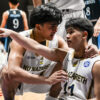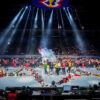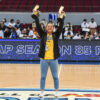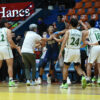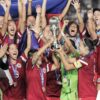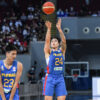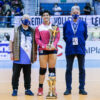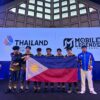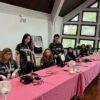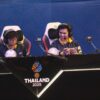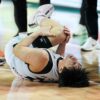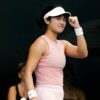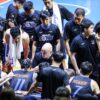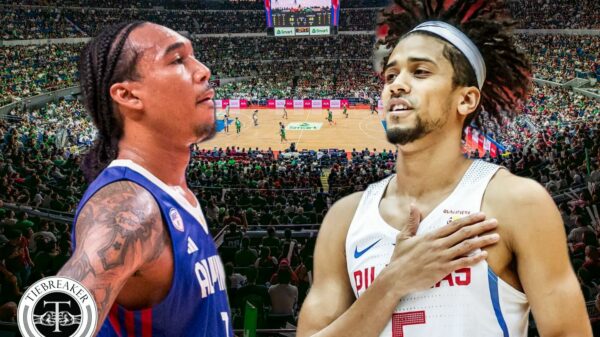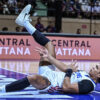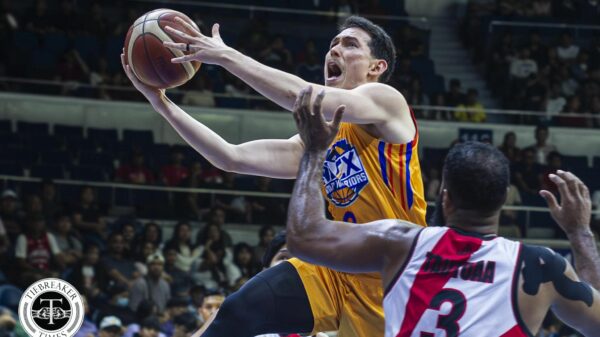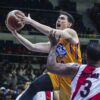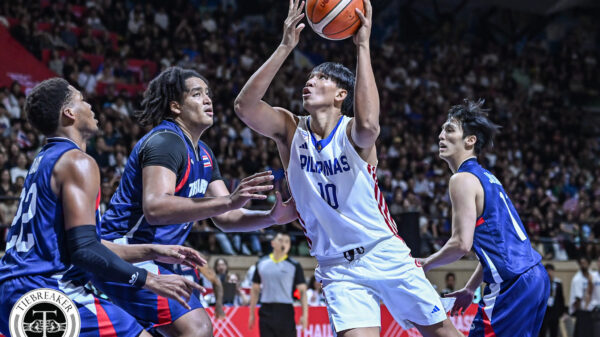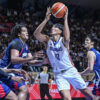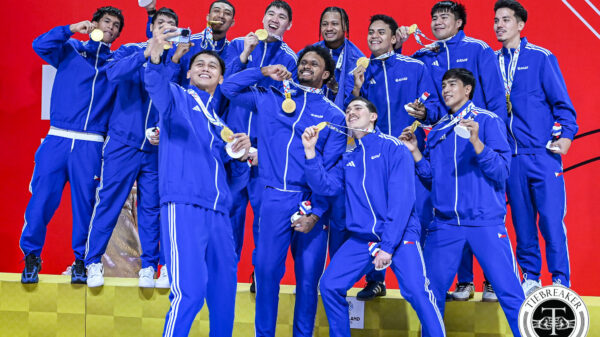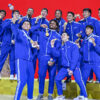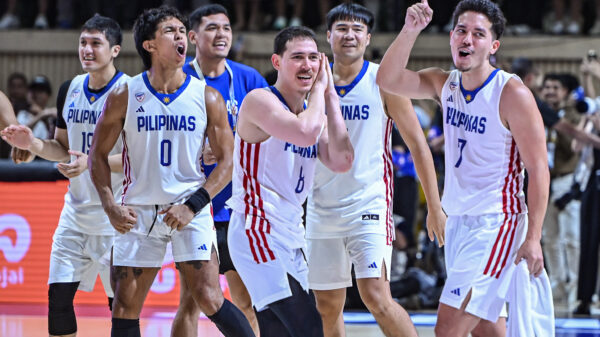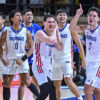It’s been a rough year so far for Gilas Pilipinas.
First, it was a subpar showing in the FIBA World Cup Qualifiers, where the offense looked less than ideal in a 24-point win against India and a 25-point loss against New Zealand. Next came a dismal showing at the 2021 Southeast Asian Games, where they were dethroned by Indonesia to end the country’s 33-year reign as the basketball tournament champions.
Strangely enough, though, it took a pair of close losses against perennial rival Korea to make it look as if the team had corrected its course. In a pair of friendlies, former New Zealand head coach Nenad Vučinić – set to man the national team in the coming third window of the FIBA World Cup Asian Qualifiers – temporarily took the reins and steered the team to a couple of four-point losses against a Korean team composed of its best professional players and a potential NBA prospect in Yeo Jun-Seok.
But how can a pair of losses against their rival be a reason for optimism? Well, it’s easy to see when we look at how the players performed on the floor.
The Exploration of Pace and Space
An easy way to conceptualize what Gilas’ offense looks like under Vučinić is to describe it as being based on “pace and space”. Basically, they go fast and they shoot a lot of threes. The pace is pushed to create more looks on offense, and the threes space the floor to open up opportunities. Pace and space isn’t an offensive scheme, but concepts and principles that are conducive to good offense. Usually, pace and space are achieved through quick passing to move the ball.
Gilas is no stranger to spitfire guards who zoom up and down the court and sling triples without fear of repercussion, but this new-look offense takes that to the next level. If what we saw in the games against Korea continues, this iteration might be the fastest and most trigger-happy one by a pretty wide margin.
| 3PA | 3P% | 3PAr* | APG | Possessions** | GP | |
| 2013 FIBA Asia Cup (C. Reyes) | 26.0 | 36.3% | 38.3% | 15.7 | 74.0 | 9 |
| 2014 FIBA World Cup (C. Reyes) | 26.4 | 32.6% | 39.6% | 10.8 | 80.0 | 5 |
| 2021 Olympic Qualifying Tournament (T. Baldwin) | 23.5 | 36.2% | 37.9% | 21.0 | 78.2 | 2 |
| 2021 FIBA World Cup Qualifiers (T. Baldwin) | 28.3 | 37.1% | 37.6% | 20.0 | 75.5 | 6 |
| 2021 Southeast Asian Games (C. Reyes) | 22.4 | 23.2% | 32.7% | 19.2 | 78.8 | 5 |
| 2023 FIBA World Cup Qualifiers (C. Reyes) | 24.0 | 25.0% | 35.3% | 12.5 | 81.2 | 2 |
| 2022 Korean Friendlies (N. Vučinić) | 40.0 | 35.0% | 48.8% | 27.0 | 84.7 | 2 |
*3PAr = percent of all FGA that came from beyond the arc
**Possessions = estimate of the number of total possessions in a 40-minute game
In the two games that we saw, Vučinić’s Gilas played the fastest basketball we’ve seen from them to date and fired from deep on nearly every other shot. His version of Gilas involved playing at a pace that is on par with an NBA team. There seems to be a priority given to finding open triples, and nearly everyone on the team has been given the green light to shoot.
Our goal in this piece is to break down, not the Gilas playbook, but the principles and characteristics that seemingly define the system based on the limited footage that we’ve seen.
The Early Bird Gets Buckets
One of the defining characteristics of the offense appears to lie in its opportunism in the early seconds of the shot clock. There is a concerted effort to run down quickly and capitalize on the fastbreak and early offense opportunities. As soon as the defense forces a miss or a turnover, the players come sprinting looking for a layup or an open shot. Based on the second game, this is the breakdown of the team’s shots when the shot clock was turned on:
| Time in Seconds Left | % of FGs Attempted |
| 24-18 (Very Early) | 37.1% |
| 18-15 (Early) | 12.9% |
| 15-8 (Average) | 37.1% |
| 8-4 (Late) | 8.1% |
| 4-0 (Very Late) | 4.8% |
Half of the team’s shots occurred at the very early or early phases of the shot clock, and the team rarely allowed itself to be put in a late clock situation. Somewhat intuitively, early shooting possessions are more efficient than late shooting possessions. This is because early in the clock, defenses are not fully set, which provides holes or gaps to attack. Conversely, late clock situations are inefficient due to the presence of a set defense and the lack of time to create an advantage This emphasis on early offense allowed Gilas to post a 117.8 Offensive Rating (oRtg). That mark would be the highest in the NBA this past season.
Early in the clock, Gilas relied on its strongest ball handlers – Kiefer Ravena, Dwight Ramos, RJ Abarrientos, and SJ Belangel – to either beat the Koreans down the floor and take it themselves, or find a teammate that has been made it over to the other side. It was made especially effective by Korea’s bad transition defense and their bigger lineup that sacrificed speed:
When the defense is set early or when a fastbreak is unavailable, the bigs usually set drag screens (a screen set during transition or semi-transition). This is done to provide another mode for early offense. Against Korea, this resulted in open triples when the bigger defender switched to guard the ball handler:
Three is the Magic Number
As we saw earlier, 48.8 percent of all of Gilas’ shots came from behind the arc. This mark eclipses that of this year’s Golden State Warriors, who attempted 45.6 percent of their shots from deep. There seemed to be an emphasis on taking open threes as soon as they were made available.
This emphasis works in two ways: first, three is more than two. Making a third of your triples is equivalent to making half of your twos. Second, the threat of making threes stretches out defenses, creates space and advantages, and causes breakdowns that make life easier. This is seen in their shots inside the arc, where they made 56 percent of their twos.
Other than Geo Chiu and Francis Lopez, everyone attempted at least two three-pointers. They were led in attempts by RJ Abarrientos (20 attempts in 38.7 minutes played) and Carl Tamayo (15). The players were given the greenest of lights to pull the trigger. Even in transition situations, they were allowed to let it fly. A couple of years ago, it would have been a benching if players shot triples in fastbreaks. Now, these boys shot them as soon as there was an opportunity.
When the game slowed down, triples were still a huge part of the shot diet. This time, they were achieved by spacing, advantage creation, and smart passing. In the half-court, the team strived to be in a 4-1 alignment, with four players outside and one big man inside with two players in the corners. This provided room for the ball handler to create an advantage that would force a defensive rotation and result in an opening. With 27 assists, Gilas consistently forced rotations which they converted into open looks.
A common thing you’ll notice in these next clips is that two Koreans go to the ball handler, which is followed by a pass or multiple passes capitalizing on the error. It’s not enough to force these defensive errors. The passing and ability to find these openings are arguably just as important and impressive. One thing to point out (and we’ll expand on this in a bit) is that this style of play turns everyone on the floor into a decision-maker with the ball. Players are given the freedom to read and react to the situation on the floor and dribble, pass, or shoot as needed. No one is used strictly as a play finisher:
Delegated Decision Making
As opposed to more traditional schemes, the guards do not dominate the ball nor are they the sole engine that makes the team run in the halfcourt. Bigs aren’t reduced to simple play finishers who live off of drop passes at the rim. Wings aren’t parked in the corner waiting for the ball to fall in their lap. Guards don’t pound away aimlessly at the clock mashing dribble moves until one stick. The on-the-floor decision-making falls on all of the players. All of them are constantly monitoring the play as it unfolds. All of them are tasked to do things with the ball in hand depending on the situation. Basically, there are no cones.
The guards (Ravena, Ramos, Belangel, and Abarrientos) still served as the main ball handlers. They were the drivers of the offense in transition and in the half-court, and they were still the ones who held the ball most. They fulfilled several roles on offense. On different occasions, they served as initiators, advantage creators, off-ball shooters, and connective passers:
The wings (Rhenz Abando, Will Navarro, and Lopez) similarly performed on and off-ball duties.
- Abando was tasked to initiate the offense on multiple occasions in addition to his stellar work as a shooter. When possible, he attacked closeouts after passes to him as well.
- Navarro looked more comfortable here as compared to his previous post-Baldwin stints. Among the three wings, he carried the most playmaking duties. In addition to being a finisher in transition, he was allowed to handle the ball, drive, and look out for cutters and act as the handoff man in dribble handoff actions, where he could choose to go through with the handoff or eschew it for better looks. His ability to keep the ball safe and his vision allows him to see the action as it unfolds around him and find efficient avenues for scoring.
- Francis Lopez finally had minutes against legitimately good competition, and he did not disappoint. He had four assists in less than 15 minutes of action over two games. He showed off his athleticism, but his involvement in playmaking was what impressed the most. Gilas ran an action to get Lopez downhill off of screens. In both times they ran it, he made the correct read to give Kevin Quiambao the ball for points. Giving him experience reading the floor at this level is huge for his development.
The most fun usage was the bigs. Passing on the roll, delay action, and handoffs initiated by bigs were a huge part of Gilas offense. Chiu and Quiambao shined as passers. Without exaggeration, they were the most impressive passers on a team with Ravena and Belangel.
Chiu was particularly impressive passing off rolls. He showed quick thinking and processed information faster than most players. Instead of limiting his usage to just staying in the dunker’s spot, he was allowed to showcase his good feel for the game, which made up for his lack of shooting and explosiveness. On the other hand, Quiambao showcased aptitude in acting as a playmaking hub in the high post and in the perimeter. He rifled off high-velocity passes for layups as he found openings inside consistently. For a player who hasn’t played organized basketball (or basketball beyond the high school level) for three years, he showed little to no signs of rust:
Carl Tamayo was probably the most versatile player for Gilas. He had the most assists on the team, acted as a floor spacer, and was a finisher that took advantage of the space and the opportunities created for him by his teammates.
At 6-foot-8, Tamayo has continuously been flashing a skillset unheard of from a Filipino player his size and has added more and more layers to his game every time he takes the court. On offense, he did it all for the team. On occasions, he led the break, ran the pick and roll, acted as a roller and popper, ran the offense in “Delay” actions, and created opportunities for his teammates. This variety of hats that he wears on the floor allows him to continue to grow into a ridiculously versatile player. Nothing but good things could come from giving a young player like him reps in multiple facets of the game and making him learn to make the right reads in these roles.
Vučinić incorporated the bigs in the offense and made the necessary decision-makers. Of the team’s 54 assists, 19 came from these three (35.2%). It helped that they were some of the smartest players of their generation, but empowering them to read the floor and make choices was key in unlocking both the players’ and the team’s full potential.
Overall, the team showcased a step towards modernity. The offense not only enshrines the pace and space concept that every NBA team adheres to, but there is also a move towards to positionless-ness. With a variety of roles for different players in different situations and the onus to score and create for others placed on everyone on the floor, the future feels like it’s starting to be now.
The Way Forward
If pace and space with the burden of playmaking shared between all 12 players is the way forward, then consider the team’s prospects bright. This may be a departure from both the old-school guard-driven Gilas play and a bit of departure from Baldwin’s methodical halfcourt offense, but it’s a welcome development well within the confines of modernity.
However, this style of play – if what we’ve seen in the two games holds for a hypothetical future full-time Vučinić tenure – comes with some concerns. First, there are teams that are faster, stronger, and more skilled that can (and will) beat Gilas in a shootout or in a track meet. Think for example the Dominican Republic team that gave Gilas the work in 2021. Second, the level of offensive production isn’t sustainable, and the team might not have the shooters to successfully implement a three-point heavy offense. On the team, only Ravena, Abarrientos, and Tamayo hit more than 30 percent of their triples in their last seasons with their respective teams. It’s hard to imagine the players maintaining the volume and efficiency over the course of a tournament.
Even with these concerns, the majority of what we saw from the players was good. The execution was sharp, the system was sound, and the usage of the players made sense. With the scant amount of film we actually have, what’s more, important to note than the results is the process. For this version of Gilas, the process was sound. That alone is cause for cautious optimism.

